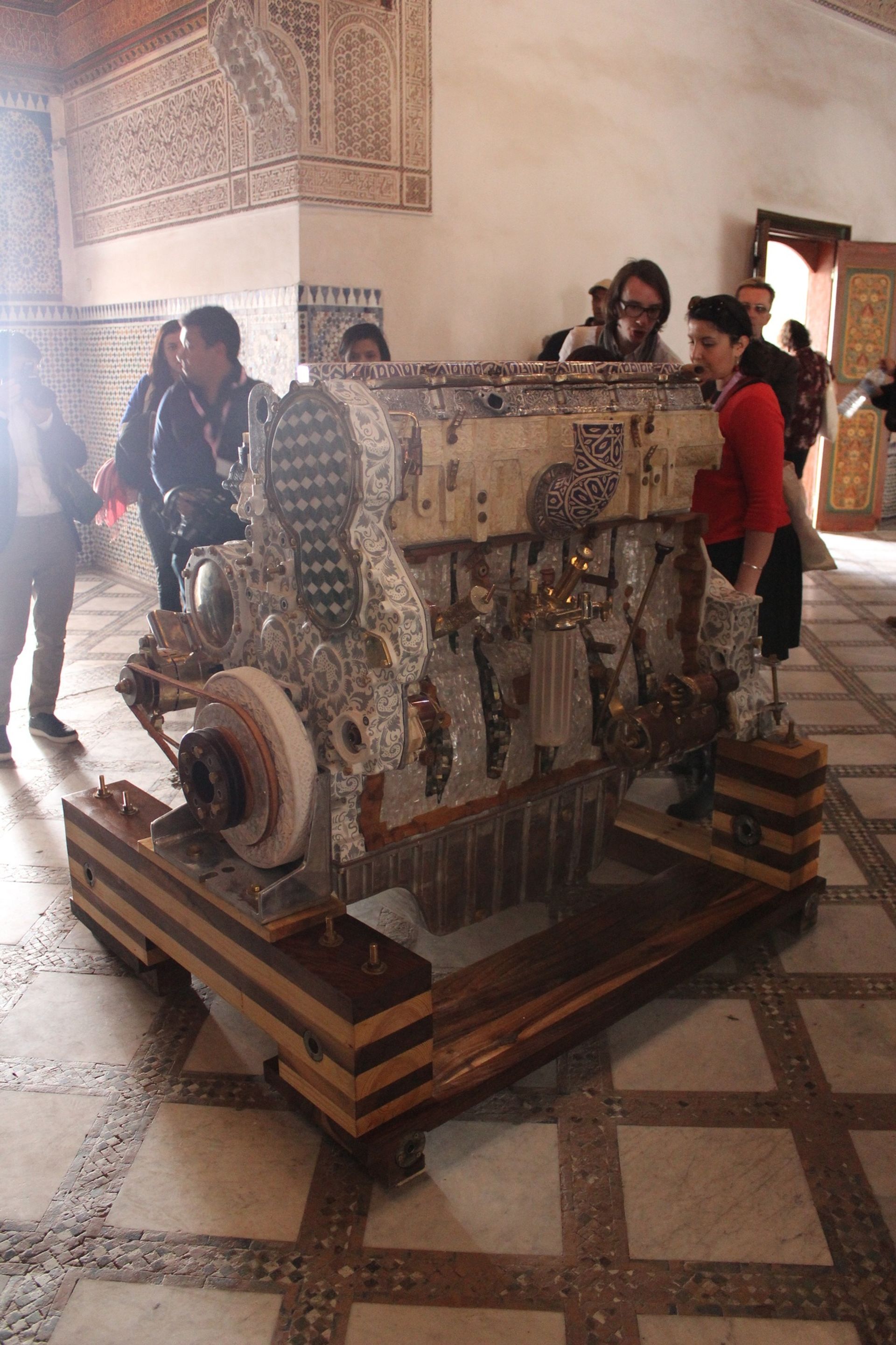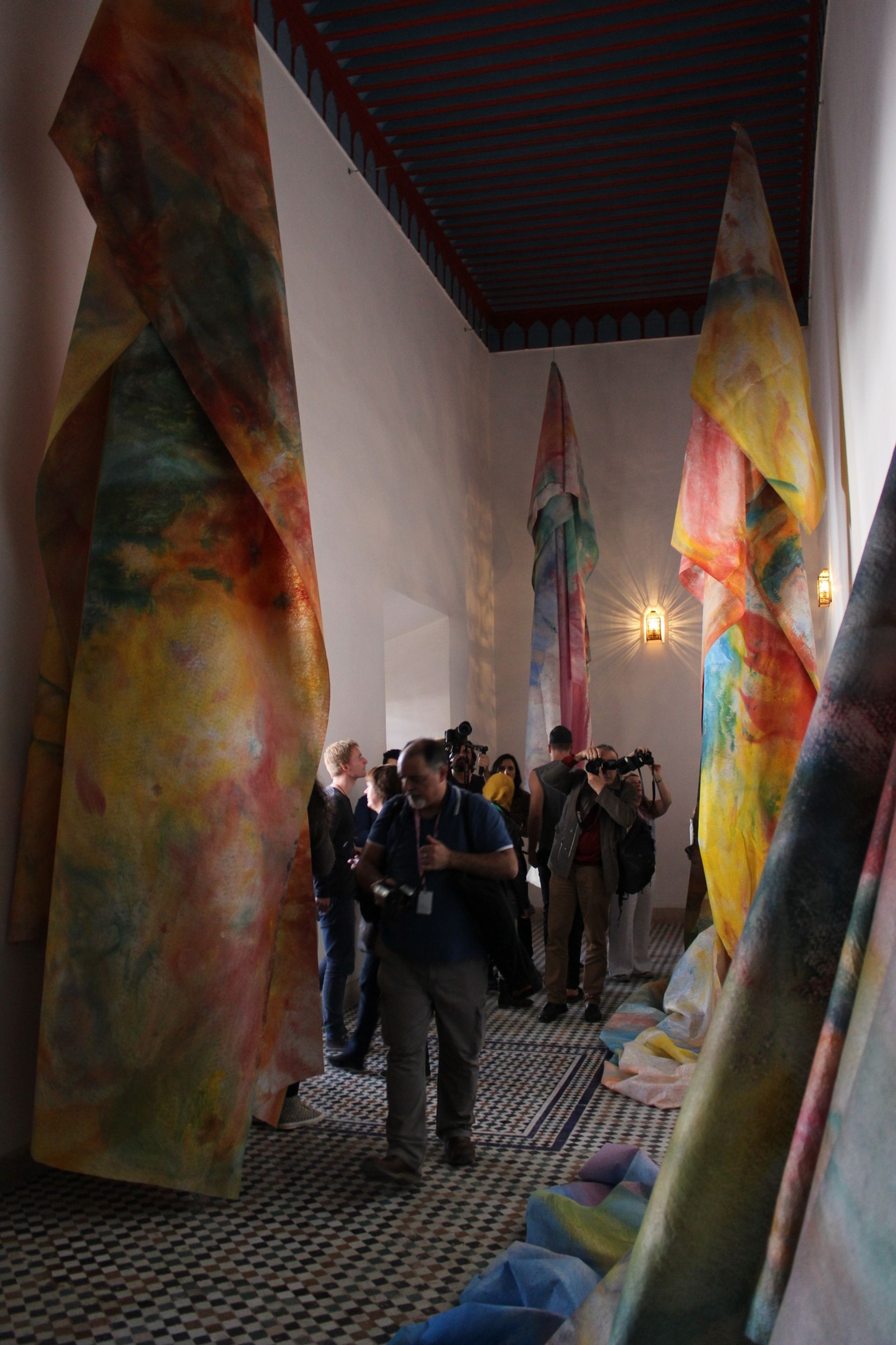In almost every tour and talk at the sixth Marrakech Biennale, its curator Reem Fadda used the terms ‘decolonisation’ and ‘living art’. Through them, she poses difficult questions about the failure of nations in a post-colonial era, a global migrant crisis, the unequal distribution of wealth, terrorism and even a US presidential election that corroborates how racism still festers. Living art, as opposed to contemporary art, “demands action; it means it is for the living”, asserts Fadda, the associate curator of Middle Eastern Art at Guggenheim Abu Dhabi.
Not New Now, the biennial’s provocative title, reflects her years-long rumination on what is, rather than what was. There is liberation in bluntly stating problems and demanding solutions or, at the very least, insisting on intellectual engagement. And there is something to be said about the fierceness by which a curator stands by his or her belief; this comes through with Fadda. “We need to act today, not tomorrow,” she insists. With the majority of 50 participating artists from Asia, Africa and the Arab diaspora, Marrakech, says Fadda, is a “lab”, an ideal venue for deliberation “void of white walls and museums”.
The show is politically charged and runs on the high-octane passion of its curator. “I am a very political person and I am Palestinian,” she says. “But I don’t need to be a Palestinian in Palestine. Palestine is everywhere and that is why I aspire to decolonisation.”

Incidentally, the biennial, for which Fadda insists on a specific route, begins with a Palestinian tragedy. The Belgian artist Eric van Hove commissioned Moroccan artists and Indonesian artisans to create D9T (Rachel’s Tribute) (2015)—a ‘re-colonised’ ornamented replica of disparities of the Caterpillar C18 engine that powers the D9T crawler tractor. That bulldozer crushed the US activist Rachel Corrie in Gaza in 2003 when she stood between it and the home of a Palestinian doctor that was ordered razed by the Israeli military. The work sits in a hallway of the stunning Bahia Palace, one of five Biennale venues and which contains the most works; the other locations are El Badi Palace, the Menara Pavilion, Koutoubia Mosque and Dar Si Said Museum.
One would be forgiven for mistaking D9T (Rachel’s Tribute) for a 19th-century objet; it almost mirrors the ornately carved cedar ceiling and sits comfortably in this gallery. This is one of the biennial’s strengths; the works function within their setting no matter how conceptual they may be. Notably, there was no caption information. Instead, booklets on each artist were placed beside works, which altogether became the biennial catalogue.

Around a small courtyard are rooms with works by Modernists of the Casablanca Group—the Pop of Mohamed Melehi, the eroticism of Farid Belkahia and the emblematical Mohammed Chabâa—who looked West but retained their Moroccanness. Elsewh ere is a claustrophobic room with Sam Gilliam’s colourful, draping canvases that respond to political and social issues of 1960s America. Nearby are Al Loving’s ripped, colourful abstract canvases that address issues of conflict, poverty and consumerism. “There is an assumption that activist art doesn’t deal with the aesthetic,” says Fadda. “I want to argue against that.” A common denominator quickly becomes apparent: each work is an activist. And the biennial slowly unfolds into a self-portrait of the curator herself.
A pavilion on the palace grounds is dedicated to Ahmed Bouanani through works created by Yto Barrada, Sara Ouhaddou and Mohssin Harraki in homage to the late Moroccan critic and filmmaker. Curated by Omar Berrada, Bouanani’s library is featured and an online archive is being developed. A standout work is Tagant, meaning forest and isolated space, Harraki’s snaking installation of 87 lightbulbs, each of which bears the name of Bouanani’s titles.
The nearby El Badi Palace exhibits some outstanding works. In this 16th-century ruin are Rachid Koraïchi’s seven ceramic vases decorated with signs and symbols that are rooted in tolerance. Their message is mirrored in the fountain in which they sit. Opposite is the monolith work by El Anatsui that drapes a façade and comments on labour, the environment and colonialism. Through a stone archway is a playground of monumental pieces that lay amidst collapse; one memorable installation is Radhika Khimji’s parachute, a symbol of hope but also of abandon. Another parachute by the Indian-Omani artist lies in the sun-drenched court of the Koutoubia Mosque, whose vault presents the videos of Kader Attia and SUPERFLEX. At the Menara Pavilion is an epic installation by Khaled Malas, who documents his collaboration with Syrian villages that built windmills from found materials. Rayyane Tabet presents a far-fetched performance on ‘personal’ colonialism through a tale about his grandfather and the German spy Max von Oppenheim.
Though the biennial features ample performance, the visual art holds more substance. Works in Dar Si Said are possible to miss because of how well suited they are to their locale; installations by Mona Hatoum, Dana Awartani and Khalil Rabah are swallowed, albeit charmingly, amid Moroccan crafts.
The biennial succeeds in communicating hard-hitting messages. Against challenges vis-à-vis funding, Fadda has ensured that the show engages the local community through performances, film programmes, seminars, lectures and online projects. The biennial’s president executive Amine Kabbaj has confirmed that this edition cost between €8.2m and €9.2m; it “has secured 70% so far and is still looking for sponsors and approaching Moroccan and international organisations”.
This edition—the first to offer free admission—has certainly cast a new light on the Marrakech Biennale as an important regional show. It is the last under the directorship of its founder, Vanessa Branson. “We have submitted our financial situation to the palace and proposed that they fund the Biennale,” says Kabbaj. “There is no agreement yet, but my feeling is positive.” In addition to the presence of ministers and dignitaries at the Biennale’s opening, the King had funded some events on the programme in a show of support.
The 2018 Biennale curators will be announced before June, says Kabbaj, “but they have to be at least at Reem’s level”. He confirmed that Omar Berrada, Mouna Mekouar, Rasha Salti and Jérôme Sans are “possible candidates”.
With a curatorial repertoire that includes a UAE pavilion at the Venice Biennale (2013) and two editions of Emirati Expressions exhibitions (2013 and 2015) that promote art from the Emirates, this Biennale confirms that Fadda has been travelling, studying and looking beyond Middle Eastern art. She has managed to make superb links in her quest to reflect on an emotionally globalised world. Fadda makes us all realise that the past is not new now. And this show was a courageous call for action.

